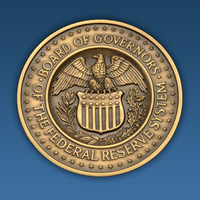Treasury Yields: A Tug of War Between Trade and Trust
April 23, 2025, 4:40 pm
U.S. Department of the Treasury
Location: United States, District of Columbia, Washington
Employees: 10001+
The world of finance is a battlefield. On one side, we have the 10-year Treasury yield, a key indicator of investor confidence. On the other, the unpredictable forces of trade tensions and political maneuvering. Recently, this tug of war has played out dramatically, with yields dancing to the tune of global events.
As of April 2025, the 10-year Treasury yield has been a rollercoaster. It hovered around 4.401% one day, only to dip to 4.346% the next. This fluctuation reflects the uncertainty in the market. Investors are like tightrope walkers, balancing on the thin line between optimism and fear.
The backdrop to this financial drama is the ongoing trade war between the U.S. and China. Tensions have escalated, with Beijing warning other nations against agreements that could undermine its interests. This is a chess game, and every move counts. The stakes are high, and the players are cautious.
Treasury Secretary Scott Bessent recently offered a glimmer of hope. He hinted at a potential de-escalation in trade hostilities. Investors responded positively, nudging yields off their lows. Yet, the atmosphere remains charged. The trade war is a storm cloud, casting shadows over the market.
In the political arena, President Donald Trump has added to the chaos. His comments about Federal Reserve Chairman Jerome Powell have sent ripples through the financial community. Trump labeled Powell a “major loser” and hinted at firing him. This was a thunderclap in the market. Investors braced for impact.
However, Trump quickly backtracked. He assured the public he had “no intention” of firing Powell. This sudden shift brought a sigh of relief. It’s a reminder of how quickly the winds can change in Washington. The market reacted, and yields dipped slightly.
Yet, the underlying issues remain. Trump’s pressure on the Fed to lower interest rates continues to loom large. It’s a double-edged sword. Lower rates can stimulate growth, but they can also undermine confidence in the central bank’s independence. Investors are wary. They know that trust is fragile.
The trade war’s impact is palpable. Tariffs remain high, with the U.S. imposing 145% duties on Chinese goods. In retaliation, China has slapped 125% tariffs on U.S. products. This tit-for-tat strategy is a heavy weight on the economy. It’s a tug of war that leaves both sides bruised.
As investors look ahead, they are searching for signs of stability. Upcoming data on mortgage rates, the S&P Global PMI Flash, and home sales will be crucial. These indicators will provide insight into the health of the U.S. economy. It’s like peering through a foggy window, trying to glimpse what lies ahead.
The bond market is a reflection of investor sentiment. When confidence wanes, yields tend to rise. Conversely, when optimism returns, yields can fall. This seesaw effect is a constant in the financial landscape. Investors are always on the lookout for the next signal.
In this environment, the 10-year Treasury yield serves as a barometer. It gauges the mood of the market. When yields rise, it often signals concern about inflation or economic growth. When they fall, it suggests a flight to safety. Right now, the market is caught in a tug of war, with conflicting signals pulling in different directions.
The uncertainty surrounding trade negotiations adds another layer of complexity. Investors are like sailors navigating treacherous waters. They must chart a course through the waves of news and speculation. Each headline can shift the tide, altering the landscape in an instant.
As the U.S. and China continue their negotiations, the world watches closely. Any sign of progress could spark a rally in the markets. Conversely, setbacks could lead to further declines. It’s a high-stakes game, and the outcome is far from certain.
In conclusion, the 10-year Treasury yield is more than just a number. It’s a reflection of the broader economic landscape. It embodies the fears and hopes of investors navigating a complex web of trade tensions and political maneuvering. As we move forward, the yield will continue to be a key indicator of market sentiment. The tug of war between trade and trust will shape the financial future. Investors must remain vigilant, ready to adapt to the ever-changing tides.
As of April 2025, the 10-year Treasury yield has been a rollercoaster. It hovered around 4.401% one day, only to dip to 4.346% the next. This fluctuation reflects the uncertainty in the market. Investors are like tightrope walkers, balancing on the thin line between optimism and fear.
The backdrop to this financial drama is the ongoing trade war between the U.S. and China. Tensions have escalated, with Beijing warning other nations against agreements that could undermine its interests. This is a chess game, and every move counts. The stakes are high, and the players are cautious.
Treasury Secretary Scott Bessent recently offered a glimmer of hope. He hinted at a potential de-escalation in trade hostilities. Investors responded positively, nudging yields off their lows. Yet, the atmosphere remains charged. The trade war is a storm cloud, casting shadows over the market.
In the political arena, President Donald Trump has added to the chaos. His comments about Federal Reserve Chairman Jerome Powell have sent ripples through the financial community. Trump labeled Powell a “major loser” and hinted at firing him. This was a thunderclap in the market. Investors braced for impact.
However, Trump quickly backtracked. He assured the public he had “no intention” of firing Powell. This sudden shift brought a sigh of relief. It’s a reminder of how quickly the winds can change in Washington. The market reacted, and yields dipped slightly.
Yet, the underlying issues remain. Trump’s pressure on the Fed to lower interest rates continues to loom large. It’s a double-edged sword. Lower rates can stimulate growth, but they can also undermine confidence in the central bank’s independence. Investors are wary. They know that trust is fragile.
The trade war’s impact is palpable. Tariffs remain high, with the U.S. imposing 145% duties on Chinese goods. In retaliation, China has slapped 125% tariffs on U.S. products. This tit-for-tat strategy is a heavy weight on the economy. It’s a tug of war that leaves both sides bruised.
As investors look ahead, they are searching for signs of stability. Upcoming data on mortgage rates, the S&P Global PMI Flash, and home sales will be crucial. These indicators will provide insight into the health of the U.S. economy. It’s like peering through a foggy window, trying to glimpse what lies ahead.
The bond market is a reflection of investor sentiment. When confidence wanes, yields tend to rise. Conversely, when optimism returns, yields can fall. This seesaw effect is a constant in the financial landscape. Investors are always on the lookout for the next signal.
In this environment, the 10-year Treasury yield serves as a barometer. It gauges the mood of the market. When yields rise, it often signals concern about inflation or economic growth. When they fall, it suggests a flight to safety. Right now, the market is caught in a tug of war, with conflicting signals pulling in different directions.
The uncertainty surrounding trade negotiations adds another layer of complexity. Investors are like sailors navigating treacherous waters. They must chart a course through the waves of news and speculation. Each headline can shift the tide, altering the landscape in an instant.
As the U.S. and China continue their negotiations, the world watches closely. Any sign of progress could spark a rally in the markets. Conversely, setbacks could lead to further declines. It’s a high-stakes game, and the outcome is far from certain.
In conclusion, the 10-year Treasury yield is more than just a number. It’s a reflection of the broader economic landscape. It embodies the fears and hopes of investors navigating a complex web of trade tensions and political maneuvering. As we move forward, the yield will continue to be a key indicator of market sentiment. The tug of war between trade and trust will shape the financial future. Investors must remain vigilant, ready to adapt to the ever-changing tides.

